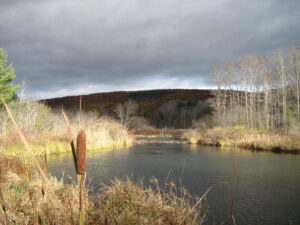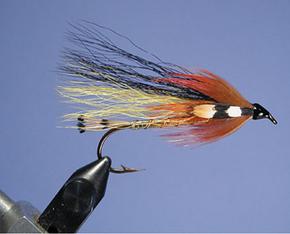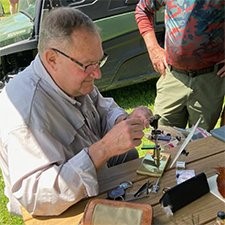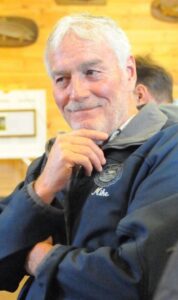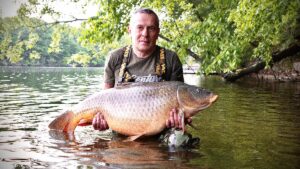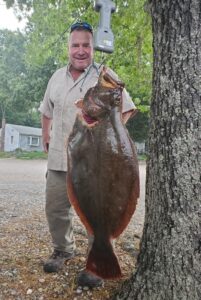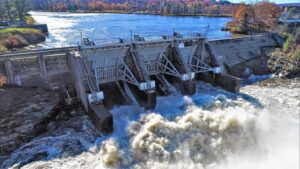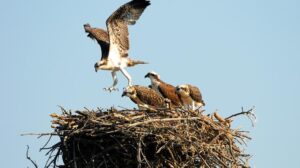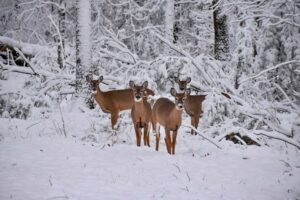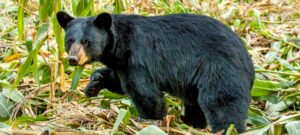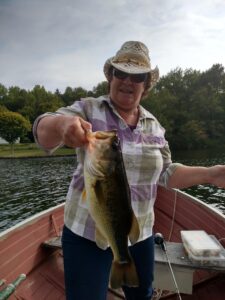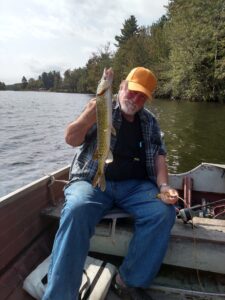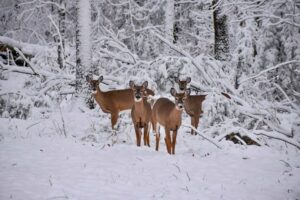Shotgun deer hunting season starts on Monday December 1 and it runs until Saturday, December 14, (excluding Sundays). Two bucks can be harvested and if hunters have valid antlerless deer permits (doe permits) they can also take a doe. 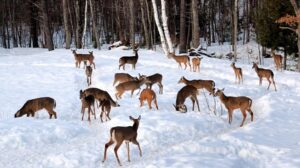
During the first week of the shotgun deer season, all harvested deer must be brought to a physical check station within 48 hours so MassWildlife biologists can collect biological data. Online harvest reporting is NOT available during this time. The Western District Check Stations are as follows:
- MassWildlife Headquarters – Dalton
- Lee Sportsman’s Club – Lee
- Mill River General Store – Mill River/New Marlborough
- Papa’s Food & Fuel – Otis
- Ernie’s Auto Sales – North Adams
- B&D Variety – Huntington
- Goshen General Store – Goshen
Avid Sports, Daves Sporting Goods and Cheshire Sporting Goods will be able to check in deer for the second week of shotgun through the rest of the year but it is not mandatory in person. Hunters can check in online as well.
As usual, on the night before opening day, thoughts of previous deer hunts will undoubtedly cross my mind, one after another.
How well I remember a deer hunt in 1991. While hunting alone, I entered a part of Beartown Mountain off of Beartown Mountain Road in South Lee, near the Wildcat Trail. Following an old logging trail, I had just ascended a steep part of Beartown Mountain and heard a shot off in the distance which sounded like it came from a swamp below me. I stopped moving for a while to see if a deer might head my way. Sure enough, a few moments later, I saw a buck downhill from me. He had come out from some small pines and brush from my right, was in a small opening and was heading for more thick vegetation to my left. He was not heading in my direction.
Being quite a distance away, I pondered whether to take such a long shot. I didn’t have a scope on my shotgun and was guessing how high I should aim. Pretty soon, he would be out of sight and I wouldn’t be able to take a shot. What the heck, I thought, and let the slug fly.
The buck made a quick movement and then walked into the small pines. Not knowing if I hit him or not, I didn’t move for about 15 minutes just to see if it would emerge somewhere to my left and I possibly allow another shot. Finally, I descended the hill to see if I had hit him, hoping that I would find him dead in the small pines. When I got to the spot, I could see a small tuft of hair, but no deer nor signs of blood. There were intermittent spots of snow and frozen ground and tracking was going to be difficult. Darn, I thought, that buck circled to my left and probably headed for the saddle between two ridges and is going down the other side of the mountain toward Ice Glen in Stockbridge. If he did that, I probably wouldn’t be able to recover him.
Following a route which I guessed he would take, I began seeing tracks and tiny drops of blood. I followed the trail until it came to the saddle and sure enough, he headed down the other side of the mountain. Darn! I wondered if I should follow him and if I found him down there, how would I be able to drag him back up the mountain and then down to my truck.
A short distance below I saw signs that the buck had slipped on the ice and fallen. That was seconds before I took a step, slipped and fell, too. On the east side of the mountain there were patches of snow, whereas on the southwest side there was ice. And, don’t you know, the deer chose to travel the steepest part of that side of the mountain. Much too slippery to stand, I had to sit on my rear and slide down the steep slope, sometimes 15-20 feet at a time until I could grab onto a small tree, rock or something to slow down or stop my slide. Nevertheless, I stayed within sight of the buck’s tracks. I was beginning to wonder why I was trailing the him, for if I found him, there was no way I could drag him back up the mountain. But, I could see more frequent blood signs and knew the deer would eventually die from the wound. I just couldn’t leave that nice buck there to be devoured by coyotes.
After crossing a little gully, the terrain became less steep and because of the lower elevation and warming weather, the ice was becoming softer and I was able walk easier. The trail led to some briars and brambles and while my arms and legs were tangled up trying to get through them, up jumped the buck and off he ran. I took a quick shot but I missed him. I resumed trailing him and about 15 minutes later in more briars and brambles, don’t you know, he did exactly the same thing….. and so did I. Darn! I thought, I’m not going to get this deer!
Thinking that he would circle to my left and head for a large field at the bottom of the mountain, I hurriedly dropped down to the edge of the field to try to cut him off. Not seeing him, I started walking in his direction along the edge of the field, making sure to stay in the woods because there were” No Trespassing” signs all along the edge of the field. When I came to a wood road leading back up the mountain, I could see tracks of several deer that ran into the open field, but I couldn’t see the deer nor spots of blood left by the injured one. I knew it, I thought, he got away. I started walking up the wood road which I think was the Burgoyne Pass (old road) which went up over the mountain and down onto Beartown Mountain Road. It would be a long trek up and over, but less steep than the way I came down.
I wondered, what if that deer didn’t join the others and was somewhere between where I had taken the last shot and where I was currently standing. So once again into the briars and brambles I went. The second I spotted his antlers, he jumped up and bounded away drawing yet another missed shot from me. He was heading for that field right where I had walked a little while earlier. Just before he got to the field, I fired once more and this time the slug found its mark, not 15 feet from the edge of the field. He was a decent sized 9-point buck.
After 3 hours of tracking and finally getting him, the celebratory cup of coffee from my thermos tasted especially good. I field dressed him, making sure to keep the heart and liver.
Now, how do I get him to my truck? I didn’t have a cell phone to call anyone for help. There were only 3 options – drag him up over the mountain and down to the Beartown Mountain Road on the other side, (utterly impossible), drag him across the large posted field and risk being arrested, or just leave him there, climb back over the mountain and go home.
Find out what I did in next week’s column.
Taconic Chapter of Trout Unlimited celebrates its 50th anniversary
You are invited to celebrate Taconic TU’s 50th Anniversary Holiday Party on December 13 at 6:30 p.m. at Zucchini’s Restaurant, 1331 North Street, Pittsfield. The price is $55 pp which includes appetizer, a full buffet and dessert. You are advised to buy your ticket by 12/1/24.
There will be auctions and raffles which include rods, reels, guided trips, flies tied by local fly tyers, and more. Some fortunate person will be leaving that party carrying a vintage Hardy bamboo rod.
This year they will also host their annual meeting as a brief interlude at the banquet. Chapter President Justin Adkins promises to make it as short and fun as possible. It might be a good time for non-members to find out what Trout Unlimited is all about. For more information, click onto taconictu@gmail.com.

